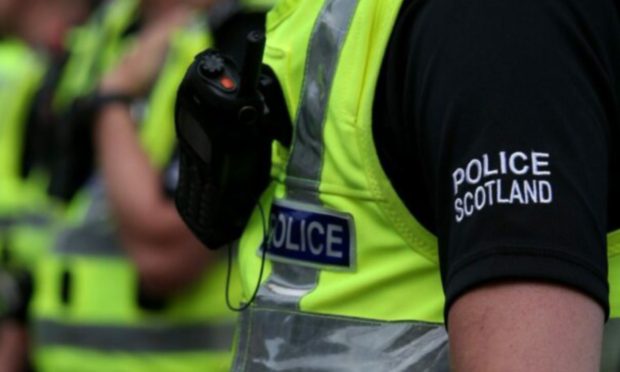There was no “delay” in a transport team attending to a tragic baby who died at an Angus midwifery unit, an inquiry has heard.
Nevaeh Stewart died less than four hours after she was born in the pool at Montrose Royal Infirmary’s community midwifery unit, and the cause of her death could not be established by post-mortem or an NHS probe.
A fatal accident inquiry at Forfar Sheriff Court heard a neonatal transport team was dispatched to take the “pale” but seemingly healthy baby back to Ninewells Hospital in 2012, taking almost two hours to arrive.
But a senior medic told the inquiry there was “no evidence” to suggest Nevaeh’s condition was deteriorating on September 30 until his team found midwives locked in a battle to resuscitate the newborn.
The hearing also heard that guidelines – which differ in Scotland and England – did not support making a 999 ambulance call because of a “body of evidence” supporting the approach of attempting to stabilise a baby before placing it under further stress in a transfer, in which the chances of a road accident occuring were also increased.
Witness Dr Nicholas Connolly said his neonatal transport team travelled to Montrose by ambulance, which was followed by a “much faster” police car bearing a consultant when Nevaeh’s condition worsened.
Fiscal depute Nicola Ross asked the doctor why his senior colleague travelled to Montrose with police while his team travelled by ambulance.
“Dr Sharma was going to a (cardiac) arrest – I was going to pick up a baby,” he said.
Sheriff Pino di Emidio asked Dr Connolly: “Having travelled in that way, did you feel your duties were compromised in any way at Montrose?”
“No.”
The inquiry heard Ninewells’ neonatal intensive care unit was called at 5.19am and a further call for ambulance assistance came at 5.45am.
Nevaeh was helped to breathe by bag and mask at 6am and 6.45am, and went into cardiac arrest at 7.10am.
The transit team left Ninewells at 6.40am and when they arrived at 7.15am, midwives had been trying to resuscitate Nevaeh for 10 minutes.
Dr Connolly said neonatal transport was not a “blue light” or 999 service as callouts could impact on the staffing of Ninewells’ neonatal unit, and Scotland’s only rapid response unit was out on a call in Wick that morning.
“We can’t drop everything to leave immediately,” he said. “The 25 minutes was necessary to plan what we were doing.”
The doctor took over resuscitation and intubated her with an endotracheal tube past the larynx to aid breathing, and administered adrenalin, sodium chloride, dextrose and fluids to increase heart rate.
Her heart rate returned 15 minutes after their arrival, although Dr Connolly was still “breathing for her”.
Her heart rate was initially over 100 beats per minute, a strong reading, but drifted below 60.
Her capillary refill rate, at which blood returned to the veins, was low, implying shock.
An adrenalin infusion was administered to make Nevaeh’s heart beat more strongly but her condition deteriorated further.
Her death was recorded at 8.35am.
NHS Tayside medical director Dr Andrew Russell spoke to a significant event analysis review report compiled in the wake of the tragedy, which included the possibility of a 999 ambulance call being made in such cases.
He was asked why Nevaeh had not been out in an ambulance and rushed to the neo-natal intensive care unit in Dundee.
“The baby was not stable enough to be transferred. In England the procedure is to transfer the baby immediately, in Scotland the practice is to retain the baby and attempt to stabilise it.
“It would not have been in her best interests to transfer her in an emergency ambulance and put her under more unnecessary stress.”
The inquiry continues in September.












